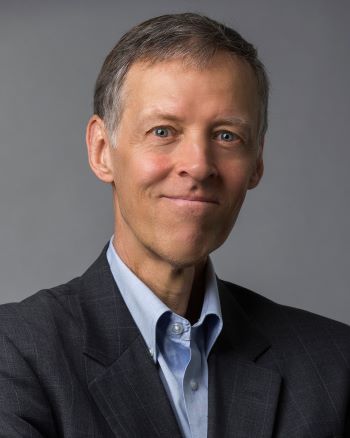Canada needs research to inform policy-making on deploying solar geoengineering to reduce global warming
It is technologically possible and cost-effective to use a solar geoengineering method to cool the Earth and prevent the worst impacts of climate change, some scientists say.
The method would involve aircraft injecting millions of tonnes of tiny sulphur aerosols into the stratosphere, to reflect solar radiation back into space and reduce global warming effects. Essentially, this is what volcanic eruptions do.
But just because we could scatter sulphur aerosols into the stratosphere doesn’t mean we should do it – or even consider doing it – without first conducting rigorous research, experts said during a webinar by the Transition Accelerator, a non-profit that works with partner organizations to build pathways to a low-carbon economy.
This research should look at if and how the technology should be deployed, how it would affect agriculture in specific regions and precipitation patterns, and examine other potential risks and unintended consequences, they said.
.png) One climate model that included deploying sulphur aerosols in the stratosphere showed that in no region on Earth would there be a significant worsening of variables such as surface air temperature, maximum annual temperature, precipitation-evaporation, and maximum five-day precipitation, said David Keith (photo at right), professor and founding faculty director of the Climate Systems Engineering Initiative at the University of Chicago.
One climate model that included deploying sulphur aerosols in the stratosphere showed that in no region on Earth would there be a significant worsening of variables such as surface air temperature, maximum annual temperature, precipitation-evaporation, and maximum five-day precipitation, said David Keith (photo at right), professor and founding faculty director of the Climate Systems Engineering Initiative at the University of Chicago.
In fact, the climate model found that these variables would be better in every region with sulphur aerosol deployment, said Keith, a Canadian with a home in Canmore, west of Calgary.
“If there’s a single reason to take this topic seriously, it’s the set of climate model results that suggest that some versions of solar geoengineering could reduce many climate risks that are most concerning,” Keith said.
“If these technologies could really reduce harms – especially for the more vulnerable people in hot countries over the next half-century – I think they’re worth taking seriously, even though there are some risks,” he said.
The webinar, “Can We Afford to Ignore Solar Geoengineering?”, considered whether Canada should invest now in solar radiation modification research.
With implications for climate change mitigation, governance and energy security, answering this question could define Canada’s ability to influence if, how, when and where solar radiation modification is deployed.
 Canada’s geography has several aspects, including ice-covered areas that are melting due to global warming, that make the country vulnerable to climate change impacts, said Lisa Dilling (photo at right), associate chief scientist at the Environmental Defense Fund.
Canada’s geography has several aspects, including ice-covered areas that are melting due to global warming, that make the country vulnerable to climate change impacts, said Lisa Dilling (photo at right), associate chief scientist at the Environmental Defense Fund.
This summer’s wildfire season in Canada – the second-worst on record so far – also starkly illustrates the risk of global warming and climate change to the country’s boreal forests and forest communities.
Research is necessary to understand, from a Canadian perspective, whether solar geoengineering is good or bad and what its impacts on Canada would be, Dilling said.
“Having legitimate research programs in the public eye that are saying what’s happening . . . would actually benefit public knowledge about what this is and what it isn’t,” she said.
Keith noted that “There is some real possibility that over the next decade that this [solar geoengineering] will somehow move a notch closer to reality.”
Then the topic will be in the middle of the international debate around climate change and the Canadian government will be expected to have a position, he said.
However, he pointed out that very little research on solar geoengineering is happening now in Canada, either in universities or at the government level.
So if Canada’s minister of Foreign Affairs or minister of Environment and Climate Change wanted to make a decision or formulate a policy on solar geoengineering, they “wouldn’t have much in the way of a basis to make that decision,” he said.
Keith said Canada, at minimum, should do enough research, assessment and social science on the topic “so that when that day happens those government officials would at least have something to turn to in terms of Canadian expertise and people they could talk to who are engaged.”
Little research funding available for so contentious a topic
But a big challenge is that the topic of solar geoengineering has become so contentious and politicized, there’s little research funding for it. Even the world’s most preeminent scientific organization on climate change – the UN’s Intergovernmental Panel on Climate Change (IPCC) – hasn’t done a comprehensive assessment of it and has no plans to do so.
“The IPCC has been pretty silent about this topic,” only briefly mentioning it in some of its assessments, Dilling said. “IPCC could do a lot more to do a thorough assessment.”
“I personally think it deserves its own assessment report. [Solar geoengineering] really needs to be thoroughly assessed, all the different aspects of it,” she said.
Keith said there are many senior people in the science and policy community, including people who help run the IPCC and major science journals, “who feel that talking about this [topic] is dangerous.”
“There have been strong people who believe we shouldn’t publish [research] or shouldn’t talk about it,” he said.
“That has tended to silence the assessment,” he added. “I think that’s sad. It means the IPCC is kind of failing to do its job to do assessment.”
 Dan Wicklum (photo at left) the Transition Accelerator’s CEO who moderated the webinar, said he personally finds the IPCC’s position to be “an abdication of scientific responsibility when we have the scientific entity in the world that’s supposed to be on top of these things and they’re saying: ‘Too touchy to touch.’”
Dan Wicklum (photo at left) the Transition Accelerator’s CEO who moderated the webinar, said he personally finds the IPCC’s position to be “an abdication of scientific responsibility when we have the scientific entity in the world that’s supposed to be on top of these things and they’re saying: ‘Too touchy to touch.’”
The Solar Geoengineering Non-Use Agreement organization, led by academics around the world, is pushing for a global ban on all solar geoengineering technologies. According to the group’s website, they argue that “solar geoengineering deployment at planetary scale cannot be fairly and effectively governed in the current system of international institutions. It also poses unacceptable risk if ever implemented as part of future climate policy.”
Along with a global ban on solar geoengineering, the group says no scientific assessments should be done on the technology, and no public funds should be spent to research the topic.
“I think we need more public money because public money tends to be more transparent,” review processes are transparent, and the public can have input, Dilling said. “If we’re going to study this, we want to study this with public money so it’s accountable to the people.”
Keith said that “There’s no open-ended answer to the question: ‘What are the risks of solar geoengineering?’ You can only answer that with some scenario,."
“If somebody tells you that solar geoengineering might have all sorts of benefits or somebody else tells you it could destroy the world, the answer is you have no way to say either of those people are right or wrong, unless you specify something about what you mean by solar geoengineering,” he said.
“There is no question that there are ways that this could be implemented that would be immensely destructive,” he Keith said. “I think it’s also true that there are ways it might be implemented that would be beneficial, but with relatively small and quantifiable side effects.”
The environmental impacts of sulphur in the atmosphere are well studied
In the U.S., at least 34 states have proposed bills that would ban solar geoengineering. In April 2024, Tennessee became the first state to adopt a ban and bills in Arizona and Florida have been passed by the state senates.
However, committees in Illinois, Mississippi, New Hampshire, North Dakota, South Dakota, Utah, and Wyoming all rejected proposed bills following reviews by scientific and environmental councils.
Keith said it is “inappropriate” to frame the solar geoengineering method of injecting sulphur aerosols into the stratosphere as involving new and untested technology. “It’s an application of existing science and technical knowledge in a new way.”
During the 1970s, humanity was pumping about 70 million tonnes of industrial sulphur emissions into the atmosphere. The resulting cooling effect is why global temperatures, even with increasing carbon dioxide concentrations in the atmosphere during the 1960s and 1970s, didn’t start to increase markedly until the 1980s, Keith noted.
That was the peak of industrial sulphur emissions, after which the U.S. Clean Air Act and regulations in other countries began to reduce sulphur emissions to where they’re now about half of what they were at their peak, he said.
“There’s an immense amount of knowledge about sulphur aerosols and their environmental harms,” Keith said.
That means “for some kinds of solar engineering, there’s a strong basis of existing science – not to say there’s no risk because these things absolutely do have risk – to be able to make quantitative assessments of what the risks and harms would be,” he said.
Injecting sulphur particles into the stratosphere is “ridiculously cheap,” with benefit-to-cost ratios in the order of 100 to one or even 1,000 to one, Keith said.
“If you wanted to ramp up to cool the Earth by half-a-degree centigrade a half-century from now, spending $1 billion a year would get you on the ramp, and even late on the ramp you’d only be [spending] many billions of dollars a year,” he said.
In comparison, the world spends $2 trillion a year on decarbonization plus much more on climate-related damages.
Nevertheless, solar geoengineering does entail physical risks, even with well-intentioned or of benevolent deployment, Keith said. “There are concerns around different kinds of injustice. And there is this concern about moral hazard – the idea that this will be exploited by fossil fuel-rich nations or companies to try and avoid emissions cuts.”
Solar geoengineering wouldn’t reduce carbon dioxide in the atmosphere
Dilling said some research among members of the public found that implementing solar geoengineering wouldn’t reduce their personal commitments to try to reduce global-warming emissions.
However, there are concerns that if solar geoengineering were implemented, efforts to reduce emissions could slow or even be curtailed.
If sulphur aerosol injection gets going and there aren’t obvious problems, “I think it’s likely that efforts to cut emissions are slowed down,” Keith said. “But I don’t think that’s a reason not to talk about it.”
Wicklum pointed to a potential risk that if solar geoengineering works, countries and industries would become "more and more addicted” to using the technology while carbon dioxide (CO2) emissions in the atmosphere keep increasing.
Injecting sulphur aerosols into the stratosphere wouldn’t reduce the CO2 concentrations in the atmosphere that drive global warming.
“Even if you cut emissions instantly to half of current emissions and left emissions at half forever, concentrations of CO2 in the atmosphere would keep building up. The underlying climate problem would keep getting worse,” Keith said.
“If you tried to keep climate change constant, you'd have to keep doing more and more sulphur aerosol injections, which would walk the world further away from pre-industrial [CO2 concentrations] toward a more dangerous place.”
Dilling said there are also potential dire scenarios where the aerosol injection suddenly stops for some reason. “And that is a cliff then, where suddenly all that underlying greenhouse gas heating is suddenly revealed again to the atmosphere, basically, and we feel the effects really suddenly.”
Dilling said the Environmental Defence Fund (EDF), which has 3.5 million members and activists in 30 countries and US$300 million in annual revenue from supporters, doesn’t support deploying solar radiation modification technologies at this time.
EDF’s research on the topic, supported by US$6 million over several years, consists of two tracks: research and policy.
The research is focused on looking in detail at the potential real-world impacts on agriculture, water supply, ecosystems, as well as the social impacts, of using sulphur aerosols to cool the planet. For example, scattering such materials in the atmosphere might affect sunlight and that potentially could impact plant growth and agricultural crops. Also, some studies show differences in regional precipitation patterns, which could shift rains vital to food production.
“We need to think of impacts research [into solar geoengineering] not as a prediction, but about how well do we know what we think we know,” Dilling said. With geopolitical risks, for example, “how would you compensate people or countries who say they have suffered harm?”
“Our tack is [to learn] what we can learn about impacts more specifically, because if this ever comes up for debate – whether we should try to do this – people are really going to care about things in the real world,” she said.
EDF’s policy track advocates for public funding for research and promotes reasoned discussion of solar radiation modification among policy actors in government and environmental non-governmental organizations.
EDF’s goal is to produce a globally connected, government-driven policy dialogue on solar radiation modification, driven by rigorous, strategic science and oriented to decision-maker needs.
Unlike Canada, the U.K. is investing millions in solar geoengineering research
Keith said that deploying solar geoengineering could start cautiously by injecting about 100,000 tonnes of sulphur into the stratosphere, which is about as much as the natural background of dimethyl sulphide produced by tiny organisms in the ocean.
“That’s enough to stop one year of warming,” he said. “It’s almost impossible to imagine there’s a big risk from that.”
That initial deployment of sulphur particles would be about 80 times less than the Pinatubo volcano eruption in 1991, which put 8 million tonnes of sulphur into the lower atmosphere.
Society needs to imagine a world in 2050 or 2070 that has a certain amount of carbon dioxide in the atmosphere “and we suffer the consequences,” Keith said.
Or imagine a world that has some amount of CO2 in the atmosphere and some deployment of sulphur aerosols, “and that means less overall warming which has a bunch of benefits” – but also introduces the risks of solar geoengineering, he said. “There’s no version of this that is risk-free.”
Keith said the appropriate order in responding to climate change is to first cut emissions, then consider solar geoengineering, and then use large-scale carbon removal technologies.
He said the Climate Systems Engineering Research Initiative at the University of Chicago aims to build the area as a field of research. This includes research on solar engineering and open-system carbon removal (such as adding crushed rocks to soils or the ocean to enhance a natural carbon-trapping process called enhanced rock weathering), as well as interventions to reduce glacial melting.
In contrast to Canada’s lack of research, the U.K is investing £56.8 million (US$75 million) in a five-year solar geoengineering research program called "Exploring Climate Cooling."
This program, led by the Advanced Research and Invention Agency, will fund 21 projects globally, with some involving small-scale outdoor experiments – the most controversial part of the research landscape.
This program – along with a separate £10.5-million, five-year research program from UK Research and Innovation –makes the U.K. the largest state funder of solar geoengineering research.
Keith and Dilling agreed that without proactive national engagement – through assessments, modelling, and support for social and physical science – Canada and other countries will lack the expertise to contribute meaningfully if solar radiation modification becomes part of international climate discourse.
“This is something that, as climate change accelerates, there’s going to be more push to try and go and use this,” Dilling noted. “So understanding more about it, I think, is going to be helpful and useful. I don’t believe that it actually pushes us towards using it.”
Keith underlined the importance of governments forming processes that reach democratic decisions about what kind of research should be conducted.
“I think the biggest thing is actually developing more trusted assessments,” by the IPCC or some other agency, he said. “We’ve talked about doing assessments for a really long time and we’ve utterly failed.”
Keith said that given the “dumpster fire” of the Trump administration’s cuts to science and research in the U.S., “it’s really important for other Western democracies, including those in the developing world, to begin to get serious about this so we don’t just have a U.S. voice.”
Canada should provide sufficient funding to start a real research effort and some kind of process to assess solar geoengineering, Keith said. “This [research] doesn’t cost much money. So Canada, even though it’s small, could actually do a lot and could be a leader on this if it wanted to be.”
R$
| Organizations: | |
| People: | |
| Topics: |
Events For Leaders in
Science, Tech, Innovation, and Policy
Discuss and learn from those in the know at our virtual and in-person events.
See Upcoming Events
You have 0 free articles remaining.
Don't miss out - start your free trial today.
Start your FREE trial Already a member? Log in
By using this website, you agree to our use of cookies. We use cookies to provide you with a great experience and to help our website run effectively in accordance with our Privacy Policy and Terms of Service.





